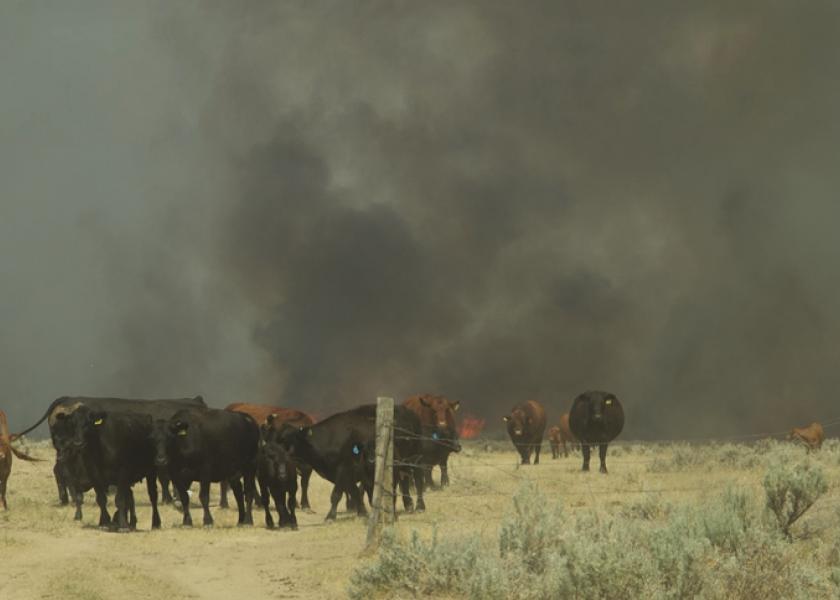Recover From Drought

Drought can create stress for the land, cattle and people. Here’s how one western ranch coped with adversity.
If there are any lessons that can be learned from the past few years of sparse rainfall, it’s that recovering from drought requires proper management.
"I think the biggest thing we’re doing is trying to have good programs going forward, and specifically with the grazing programs," said Trey Patterson, chief operations officer of the Padlock Ranch Company, Ranchester, Wyo.
Patterson spoke at the 10th annual Holt Cat Symposium on Excellence in Ranch Management in Kingsville, Texas, this past fall.
On the Padlock Ranch, Patterson said, "We put a lot of emphasis on creating periods of rest so the pastures can recover from grazing and drought."
 |
Trey Patterson |
Changing the timing and duration of grazing allows for better development of the root systems, and that can mitigate the effects of drought in the future, he added.
Drought also causes a lot of stress, not just for the land and the cattle, but on the people who are the caretakers of those resources.
"Drought causes stress on human beings, and it gets you down," Patterson said. "A person who is stressed and down emotionally—it affects you mentally and physically. It’s going to tremendously hamper your ability to respond and make wise decisions to work your way out of the drought."
During the early part of the 2000s, the Padlock Ranch, located in southern Montana and northern Wyoming, went through a period of drought that preceded last year’s drought. The first drought was harsher and forced the ranch to liquidate some of the cowherd.
The most recent period of low moisture during 2012 didn’t have the overwhelming impact that it did in much of the U.S., but fire was a major dilemma that resulted from the drought at the Padlock Ranch.
"We get these dry lightning storms in the late summer that come over the Rocky Mountains. If it is dry, they will absolutely torch a lot of country," Patterson said. "Last year, we had a tremendous fire situation. In one event, we had seven different fires that together burned out 75,000 acres in one unit, and it wasn’t the only fire we had during the year."
Cows were standing on black, scorched earth with no available feed. "In the face of that, we were thinking what do we do now?" says Patterson. "You go through that emotional phase where you’re sad, scared or worried, but the first thing is to get over that. You’ve got to get through that. It’s important emotionally to go through, but you have to have a sound business sense as you move out of that."
Lessons learned. To make those business decisions, Patterson said to look at your fixed versus variable cost analysis, budgets and any operational data from previous years.
Here are some of the things that the Padlock Ranch did to help maintain the grazing system after drought:
- Built back the cowherd after the first drought for a 12-month grazing system instead of the nine-month grazing season with three months of hay supplementation.
- Areas that were better suited for winter grazing were saved for that period of time. In the summer, cattle were stocked on areas where access to water was better but may have more snow and pine trees. "We moved cattle around to best use that land base," Patterson said.
- Moved the calving date to May to better suit the grass supply, rather than in March or April when more hay is required.
- Utilized alternative grazing methods, such as grazing cornstalks in Nebraska on leased land or crop residue on the ranch, which ties into having geographic diversity in the operation. "I think if we can expand into areas where we are geographically different, it does give you the ability to weather these regional dry periods and spread your risk," Patterson said.
- Since cattle are harvesting their own feed, some hay meadows have been turned into pasture and are irrigated under a pivot. Now heifers don’t have to stay in the feedlot through breeding because they can be grazed on a management-intensive program right on the ranch.
- Yearlings make up about 20% of the summer grazing on the ranch, which allows flexibility in years of drought because they are easier to move or market than cows.
- Last year’s May- and June-born calves were weaned in early August at approximately 280 lb. to extend the grazing season for cows. This maintained cow condition and was more efficient than feeding pairs.
- Pregnancy tests were performed as soon as possible. Cows with the latest due date were pastured separately in case they needed to be culled. Open, old or cows in poor condition were sold.
In closing, Patterson said, "You have to have the right attitude. Make sure you keep your head above water and focus on the things that are important. If you do, you can come out of these situations with a better, stronger business than you had going into it."







